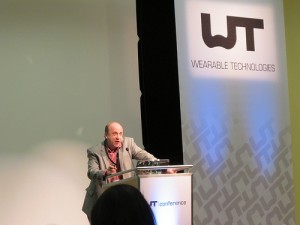Demand for real-time data, including personal health information, will drive the market for wearable wireless devices to grow from 14 million items this year to as many as 171 million in 2016, according to new research.
IMS Research, a subsidiary of IHS, has said that in four years, the market for these devices is expected to hit a minimum of $6 billion.
That is “our most conservative forecast,” said IMS analyst Theo Ahadome. The estimate assumes that the adoption of wearable technology will be limited by factors such as a lack of suitable technology, “poor user compliance” and an experience that isn’t as “enhanced” as users might expect it to be, he said.
Most of today’s wearable devices are designed for healthcare-related uses, such as glucose and heart rate monitoring. In the future, the market will see a dramatic rise in the number of devices for personal entertainment and military use, IMS predicted.
Google Glasses and the rumoured Apple Smart Watch will be part of the next wave. Other wearable devices that are likely to emerge include sleep sensors, hand-worn terminals and so-called heads-up displays — transparent screens attached to helmets that provide data for industrial and military use.
The Federal Communications Commission recently approved a Medical Body Area Network (MBAN) radio spectrum for use in hospitals. Over time, experts say, MBAN devices could be used at home.
MBAN systems could monitor numerous functions, aggregate the results and then transmit the data to a remote location — such as a public or private cloud — for evaluation.
One looming concern, however, is the security of any health data collected and transmitted by such equipment. According to research firm IDC, more than three quarters of all digital information is generated by individuals and less than one-third of all data stored has even minimal protection.






